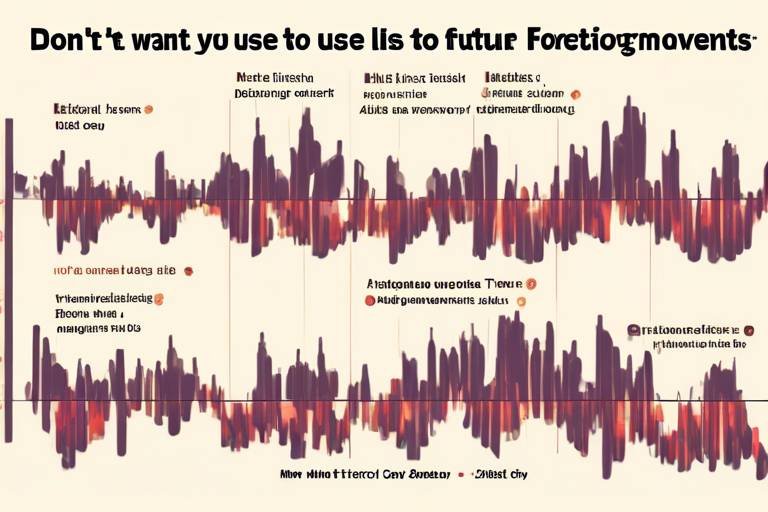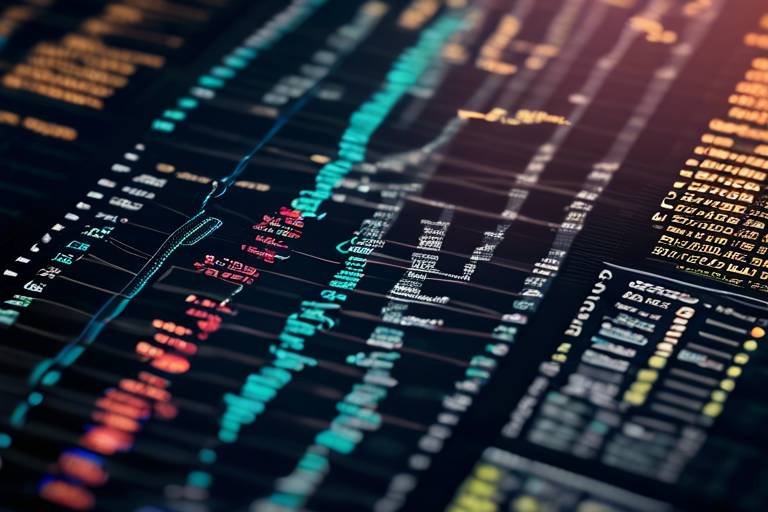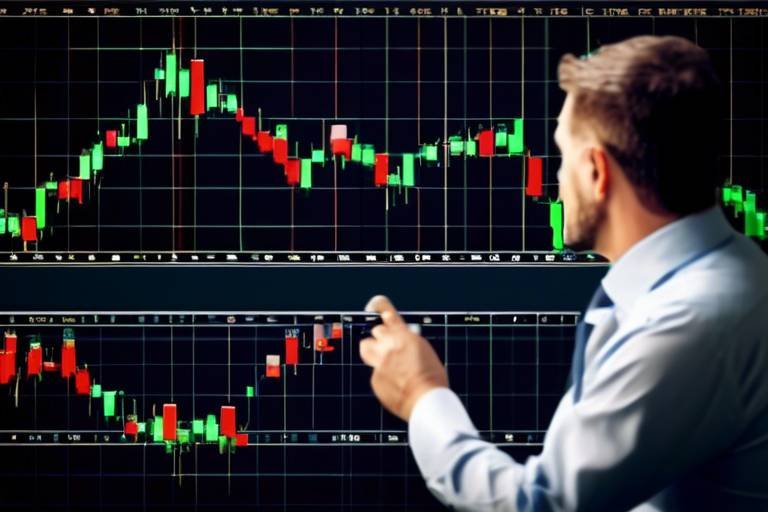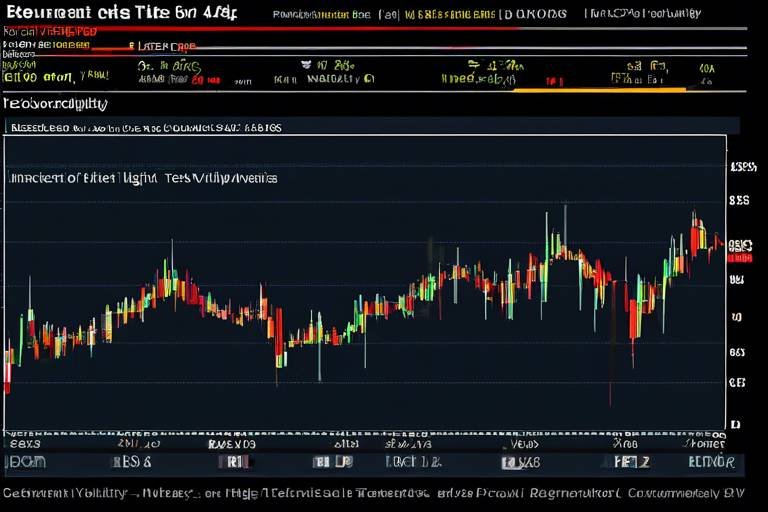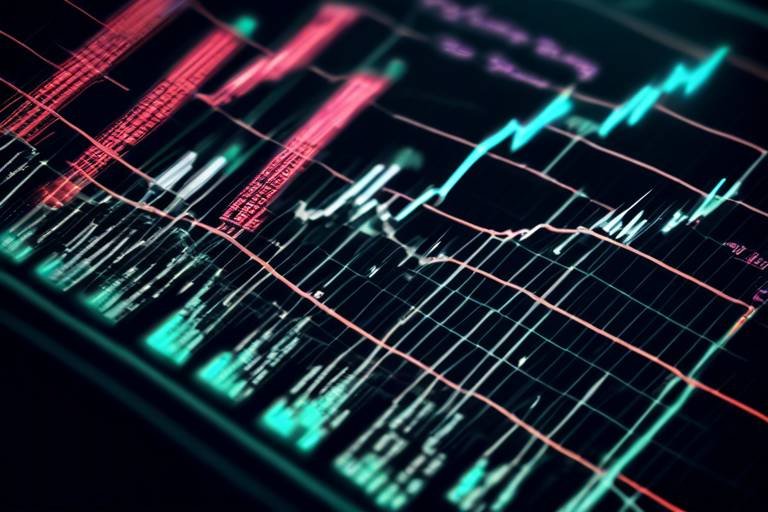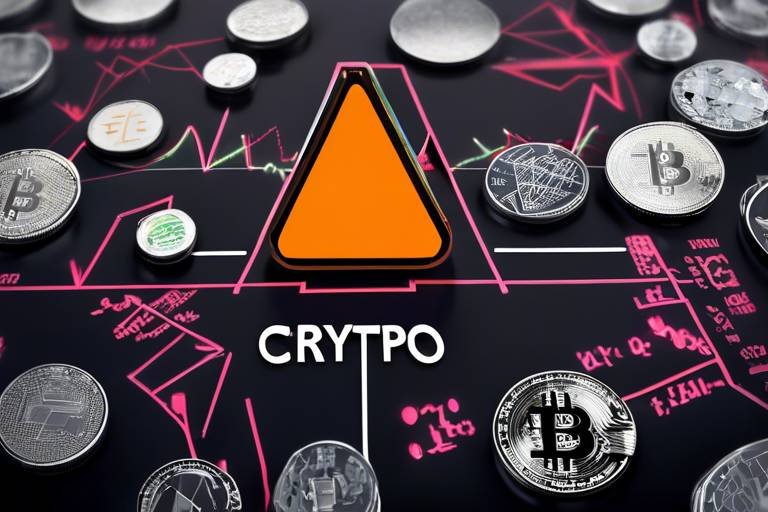How to Use Price Action for Crypto Trading Decisions
In the fast-paced world of cryptocurrency trading, making informed decisions can feel like navigating a maze without a map. However, one of the most powerful tools at your disposal is price action analysis. This approach focuses on the price movements of cryptocurrencies, helping traders identify trends, reversals, and potential entry and exit points. By understanding price action, you can enhance your trading strategies and make decisions that are not just educated, but also confident.
Price action is not just about numbers; it’s about understanding the story behind those numbers. Imagine watching a thrilling movie where every twist and turn keeps you at the edge of your seat. In the same way, price action reveals the drama of the market—the struggles between buyers and sellers, the emotional highs and lows, and the pivotal moments that can lead to significant price movements. By honing in on these price movements, traders can gain insights that traditional indicators might miss.
So, how do you get started with price action trading? First, it's essential to familiarize yourself with the basics. Price action refers to the movement of a cryptocurrency's price over time, often represented visually through charts. These charts can help you see patterns and trends that indicate where the market might be headed next. Understanding these movements is like learning to read a map; it provides direction and clarity in an otherwise chaotic environment.
In the sections that follow, we will dive deeper into key concepts such as support and resistance levels, market sentiment, and the importance of candlestick patterns. Each of these elements plays a critical role in shaping your trading decisions and can significantly impact your success in the crypto market.
Let’s embark on this journey together and unlock the secrets of price action trading!
Price action refers to the movement of a cryptocurrency's price over time. This subheading delves into the basics of price action analysis and its significance in making trading decisions.
Identifying patterns in price movements can provide traders with valuable insights. This section discusses common price action patterns and how they can indicate potential market trends.
Support and resistance levels are crucial concepts in price action trading. This subheading explains how to identify these levels and their importance in determining entry and exit points.
Support levels are price points where a downtrend can pause due to buying interest. This section outlines methods for identifying these levels effectively.
Resistance levels indicate where an uptrend may stall due to selling pressure. Here, we discuss techniques for recognizing these critical points in the market.
Market sentiment plays a significant role in price action. This subheading examines how trader psychology influences price movements and decision-making processes.
Candlestick patterns are essential tools for price action traders. This section covers various candlestick formations and what they signify about market behavior.
Certain candlestick patterns are widely recognized among traders. This subheading highlights popular patterns and their implications for future price movements.
Understanding what candlestick signals mean is vital for effective trading. This section explains how to interpret these signals to make better trading decisions.
- What is price action trading? Price action trading involves analyzing the historical price movements of an asset to make trading decisions without relying on indicators.
- How can I identify support and resistance levels? You can identify these levels by looking at historical price points where the price has reversed or stalled in the past.
- Why are candlestick patterns important? Candlestick patterns provide visual cues about market sentiment and potential price reversals, making them essential for traders.
- Can price action trading be used in all markets? Yes, price action trading can be applied to any financial market, including stocks, forex, and cryptocurrencies.

Understanding Price Action
Price action is a term that encapsulates the movement of a cryptocurrency's price over time, and it serves as the backbone of many trading strategies. Imagine you're standing on a beach, watching the waves ebb and flow; each wave represents a price movement, while the overall tide reflects the market's sentiment. Understanding price action is like learning to read the ocean—by observing these movements, traders can make informed decisions about when to enter or exit trades.
At its core, price action analysis focuses on historical price movements, using charts to visualize trends, reversals, and consolidations. Unlike traditional technical analysis that relies heavily on indicators and oscillators, price action trading emphasizes the actual price movement itself. This approach allows traders to react to market conditions in real time, adapting their strategies based on the current landscape rather than relying on lagging indicators.
One of the key advantages of price action analysis is its simplicity. Traders can look at price charts and identify patterns without getting bogged down by complex calculations. Instead of being overwhelmed by data, they can focus on the following critical components:
- Trends: Recognizing whether the market is in an uptrend, downtrend, or ranging can guide trading decisions.
- Price Levels: Identifying significant price levels where the price has previously reversed can help in setting entry and exit points.
- Volume: Analyzing volume alongside price action can provide insights into the strength of a price move.
Price action is not just about the numbers; it’s about understanding the psychology behind those numbers. Traders must consider the emotions and motivations of other market participants. For instance, when a cryptocurrency hits a support level, it may evoke a sense of optimism among buyers, leading to increased buying pressure. Conversely, a resistance level might trigger fear among buyers, prompting them to sell and thus driving the price down.
In summary, mastering price action involves more than just reading charts; it requires a deep understanding of market dynamics and trader psychology. By honing these skills, traders can enhance their decision-making processes, ultimately leading to more profitable trades. The beauty of price action lies in its ability to adapt to the ever-changing market conditions, making it a vital tool for anyone serious about cryptocurrency trading.

Key Price Action Patterns
When diving into the world of cryptocurrency trading, one of the most exciting aspects is recognizing . These patterns act as the roadmap for traders, guiding them through the volatile landscape of digital assets. Understanding these patterns can be the difference between making a profit and taking a loss. But what exactly are these patterns, and how can they help you in your trading journey?
Price action patterns emerge from the historical price movements of cryptocurrencies, and they can reveal a lot about market sentiment and potential future trends. By analyzing these patterns, traders can make informed decisions about when to enter or exit a trade. But remember, while patterns can provide insights, they are not foolproof. It's essential to combine them with other forms of analysis to enhance your trading strategy.
Some of the most common price action patterns include:
- Trends: Identifying whether the market is in an uptrend, downtrend, or sideways trend is crucial. An uptrend signifies increasing prices, while a downtrend indicates falling prices. A sideways trend suggests market indecision.
- Reversals: Patterns like head and shoulders or double tops/bottoms signal potential reversals in the market, indicating that a current trend may be coming to an end.
- Continuation Patterns: Flags, pennants, and triangles indicate that the current trend is likely to continue after a brief pause.
But how do you spot these patterns in real-time? It requires a keen eye and a bit of practice. Traders often use charts to visualize price movements and identify these patterns. For instance, a classic head and shoulders pattern consists of three peaks: the first peak (left shoulder), the highest peak (head), and the final peak (right shoulder). Recognizing this pattern can suggest a potential bearish reversal, helping traders prepare for a downward shift in prices.
Another critical aspect of price action trading is understanding the context in which these patterns occur. For example, a double bottom pattern, which looks like a "W," typically indicates a bullish reversal in a downtrend. However, if this pattern appears in a strong downtrend, it might not carry the same weight. Thus, context is everything!
In addition to recognizing patterns, traders must also consider the volume accompanying these movements. Volume can confirm the strength of a price action pattern. For instance, if a breakout occurs from a resistance level with high volume, it could indicate a strong move in that direction. Conversely, a breakout with low volume might suggest a false signal, leading to potential losses.
In summary, mastering key price action patterns can significantly enhance your trading strategy. By recognizing trends, reversals, and continuation patterns, you can better navigate the unpredictable waters of cryptocurrency trading. However, always remember to use these insights in conjunction with other analytical tools to make well-rounded trading decisions.

Support and Resistance Levels
Support and resistance levels are fundamental concepts in the realm of price action trading, acting as invisible barriers that influence market behavior. Think of support levels as a safety net for prices; they represent points where buying interest is strong enough to halt a downtrend. Conversely, resistance levels act like a ceiling, where selling pressure can prevent prices from rising further. Understanding these levels can be the difference between a profitable trade and a costly mistake.
Identifying support and resistance levels is not just about drawing lines on a chart; it requires a keen eye for price movements and an understanding of market psychology. Traders often look for historical price points where the cryptocurrency has reversed direction. These points are significant because they indicate where traders previously decided to enter or exit positions. For instance, if Bitcoin consistently bounces off $30,000, that price may be seen as a strong support level, indicating that buyers are willing to step in at that price.
To effectively identify these levels, traders can utilize various methods, including:
- Historical Price Levels: Look at past price movements to find where the price has reversed in the past.
- Moving Averages: These can act as dynamic support and resistance levels, helping to smooth out price fluctuations.
- Trendlines: Drawing trendlines can help visualize potential support and resistance, especially in trending markets.
Once you've identified these critical levels, the next step is to monitor how the price behaves around them. If the price approaches a support level and shows signs of bouncing back, it may confirm that the level is indeed strong. On the flip side, if the price breaks through a support level, it could indicate a potential downtrend, prompting traders to reconsider their positions.
Resistance levels work similarly but in the opposite direction. If a cryptocurrency price approaches a resistance level and starts to retreat, it suggests that sellers are stepping in to take profits. However, if the price breaks through a resistance level, it can signal a bullish trend, encouraging traders to enter long positions. The key takeaway here is that both support and resistance levels are not static; they can change based on market conditions and trader sentiment.
In summary, understanding support and resistance levels is crucial for any trader looking to make informed decisions in the volatile world of cryptocurrency. By identifying these levels and observing price behavior around them, traders can enhance their strategies and potentially increase their chances of success in the market.

Identifying Support Levels
Identifying support levels is a fundamental aspect of price action trading that every trader should master. Support levels are essentially price points where a cryptocurrency tends to find buying interest, preventing the price from falling further. Think of support as a safety net; just like a trampoline bounces you back up when you hit it, support levels can cause prices to rebound after a decline. But how do you pinpoint these crucial levels effectively?
One of the most straightforward methods is to look at historical price charts. By examining past price movements, you can identify areas where the price has previously bounced back. These historical lows often serve as strong support levels. Traders typically use a combination of horizontal lines and trend lines to mark these levels on their charts. The more times the price has bounced off a certain level, the stronger that support is considered to be.
Another technique involves using moving averages. For example, the 50-day moving average often acts as a dynamic support level. When the price approaches this average from above, it may find support and reverse direction. It's like having a reliable friend who always catches you when you fall; moving averages can provide that cushion in the volatile world of crypto trading.
Additionally, volume plays a critical role in confirming support levels. When a price approaches a support level with high trading volume, it indicates strong buying interest. Conversely, if the price drops below a support level with low volume, it may signal a potential breakdown. In this case, you might want to reconsider your position, as the safety net may have a hole in it!
To summarize, here are some effective methods for identifying support levels:
- Examine historical price charts for previous lows.
- Utilize moving averages, such as the 50-day moving average.
- Monitor trading volume to confirm the strength of the support level.
By mastering these techniques, you can increase your chances of making informed trading decisions. Remember, the goal is not just to identify support levels but to understand their significance in the broader context of market dynamics. With practice, you'll develop an instinct for spotting these critical price points, allowing you to trade with greater confidence.
Q: What is a support level?
A: A support level is a price point where buying interest is strong enough to prevent the price from falling further.
Q: How can I identify support levels effectively?
A: You can identify support levels by analyzing historical price charts, using moving averages, and monitoring trading volume.
Q: Why are support levels important in trading?
A: Support levels help traders determine entry and exit points, manage risk, and make informed trading decisions.

Recognizing Resistance Levels
When it comes to trading cryptocurrencies, recognizing resistance levels is like having a map in a dense forest; it guides you through potential pitfalls and helps you navigate toward profit. Resistance levels are essentially price points where selling pressure tends to outweigh buying interest, causing the price to stall or reverse. Understanding these levels can be a game-changer for traders looking to make informed decisions. But how do you identify these crucial points in the market?
One effective method for recognizing resistance levels is by analyzing historical price data. Look for areas where the price has previously peaked and then retraced. These peaks often indicate that traders are willing to sell at that price, creating a barrier that the price struggles to surpass. Additionally, you can use tools such as trend lines and moving averages to further validate these resistance points. For example, if a cryptocurrency has consistently failed to break above a certain price level, that price can be deemed a significant resistance level.
Another technique involves observing the volume of trades at specific price levels. If you notice a spike in trading volume as the price approaches a certain point, it may signal that many traders are ready to sell, reinforcing the resistance level. This is where the psychology of the market comes into play; traders often remember past price movements and may act similarly in the future, creating a self-fulfilling prophecy of sorts.
To put this into perspective, imagine you're trying to push a heavy boulder up a hill. The boulder represents the price of a cryptocurrency, and the hill is the resistance level. Each time you attempt to push it over the hill, you find it increasingly difficult as more weight is added (in this case, selling pressure). Eventually, you either give up, or the boulder rolls back down the hill, which reflects how prices often behave when they hit resistance.
In summary, recognizing resistance levels is essential for any trader looking to refine their strategy and enhance their decision-making process. By analyzing historical data, observing trading volume, and understanding market psychology, you can pinpoint these critical levels and position yourself to capitalize on potential price movements. Remember, the key to successful trading lies in not just recognizing these levels but also knowing how to act upon them effectively.

Market Sentiment and Price Action
Market sentiment is a powerful force in the world of cryptocurrency trading, often acting as the invisible hand that guides price movements. It's not just about numbers and charts; it's about the collective emotions and attitudes of traders that can lead to significant price fluctuations. Think of market sentiment as the mood of the market—when traders feel optimistic, they tend to buy, pushing prices up. Conversely, when fear grips the market, selling can create a downward spiral. Understanding this sentiment is crucial for making informed trading decisions.
To grasp how market sentiment influences price action, consider the following factors:
- News and Events: Major news stories, such as regulatory changes or technological advancements, can dramatically shift market sentiment. For instance, positive news about a cryptocurrency can lead to a surge in buying activity, while negative news can trigger panic selling.
- Social Media Influence: Platforms like Twitter and Reddit have become hotspots for traders to express their opinions. A single tweet from a prominent figure can send prices soaring or plummeting, showcasing the power of social sentiment.
- Market Trends: The overall direction of the market can heavily influence sentiment. In a bull market, traders are generally more optimistic, while in a bear market, pessimism prevails.
It's essential to recognize that market sentiment is often reflected in price action itself. For example, during a strong uptrend, you might notice a series of higher highs and higher lows, indicating that buyers are in control. On the other hand, a downtrend characterized by lower highs and lower lows suggests that sellers dominate the market. By analyzing these patterns, traders can gauge the prevailing sentiment and adjust their strategies accordingly.
Moreover, the concept of fear and greed is particularly relevant in the crypto space. Many traders fall prey to emotional trading, where fear of missing out (FOMO) or fear of loss drives their decisions. This emotional rollercoaster can lead to irrational behavior, such as buying at the peak of a price surge or selling in a panic during a downturn. A savvy trader will strive to detach their emotions from their trading decisions, relying instead on price action and sentiment analysis to guide their choices.
In summary, understanding market sentiment is not just an ancillary skill for crypto traders; it's a fundamental aspect that can significantly impact trading success. By keeping a close eye on sentiment indicators and recognizing the emotional drivers behind price movements, traders can enhance their decision-making process and potentially improve their overall performance in the volatile world of cryptocurrency trading.
Q: How can I gauge market sentiment?
A: You can gauge market sentiment through various methods, including analyzing social media trends, news articles, and sentiment indicators available on trading platforms.
Q: Why is market sentiment important in crypto trading?
A: Market sentiment can lead to rapid price movements, making it crucial for traders to understand the emotions driving the market to make informed trading decisions.
Q: How does fear and greed affect trading decisions?
A: Fear and greed can lead to emotional trading, causing traders to make impulsive decisions rather than following a well-thought-out strategy.

Using Candlestick Patterns
Candlestick patterns are essential tools for price action traders, acting like a compass that guides you through the often-turbulent seas of cryptocurrency markets. These patterns provide insights into market sentiment and potential future price movements. Each candlestick reflects a specific period's open, high, low, and close prices, encapsulating the emotional battle between buyers and sellers. By analyzing these candlesticks, traders can gain a clearer understanding of market dynamics and make more informed decisions.
Understanding candlestick patterns is akin to reading the mood of a crowd at a concert. Just as you can gauge excitement or tension by observing the audience, you can interpret market sentiment through these formations. For instance, a series of long green candlesticks may indicate strong buying pressure, while a cluster of red candlesticks could suggest that sellers are gaining control. This visual representation of price action allows traders to spot potential reversals and continuations, making it a vital aspect of their trading strategy.
Among the various candlestick formations, there are a few standout patterns that traders often rely on. Some of the most popular include:
- Doji: This pattern occurs when the opening and closing prices are nearly identical, indicating indecision in the market.
- Hammer: A hammer candlestick has a small body and a long lower shadow, suggesting a potential reversal after a downtrend.
- Engulfing: An engulfing pattern consists of a small candlestick followed by a larger one that completely engulfs it, signaling a possible shift in momentum.
Recognizing these patterns is just the beginning; interpreting them correctly is where the real skill lies. For example, when you spot a Doji after a significant uptrend, it may signal that the bullish momentum is waning, and a reversal could be on the horizon. Conversely, if a hammer appears after a downtrend, it could indicate that buyers are stepping in and a bullish reversal might be imminent. The key is to combine candlestick patterns with other price action tools, such as support and resistance levels, to enhance your trading decisions.
Moreover, the context in which these patterns appear is crucial. A single candlestick pattern might not provide a complete picture, but when combined with other indicators or patterns, it can significantly increase your chances of success. For instance, if a bullish engulfing pattern forms at a support level, it carries more weight than if it appears in isolation. This interplay of multiple factors is what makes price action trading both an art and a science.
In conclusion, mastering candlestick patterns requires practice and patience. As you delve deeper into the world of price action trading, you'll begin to recognize these patterns more intuitively. Remember, the market is a living entity influenced by countless factors, but with the right tools and mindset, you can navigate it with confidence.
Q1: What are candlestick patterns?
Candlestick patterns are formations created by a series of price movements represented visually on a chart. They help traders interpret market sentiment and predict potential price movements.
Q2: Why are candlestick patterns important in crypto trading?
They provide insights into market psychology, allowing traders to identify potential reversals or continuations in price trends, thereby enhancing decision-making.
Q3: How can I effectively use candlestick patterns?
To use candlestick patterns effectively, combine them with other tools like support and resistance levels, and always consider the broader market context.

Popular Candlestick Patterns
When it comes to crypto trading, candlestick patterns are like the secret sauce that can elevate your trading game. These patterns provide insights into market sentiment and potential price movements, helping traders make informed decisions. Understanding these patterns is crucial because they can signal potential reversals or continuations in price trends. So, what are some of the most popular candlestick patterns that every trader should know? Let's dive in!
One of the most recognized patterns is the Doji. This pattern forms when the opening and closing prices are virtually the same, creating a small body with long wicks. A Doji indicates indecision in the market, suggesting that buyers and sellers are at a stalemate. When you spot a Doji after a strong trend, it might signal a potential reversal. For instance, if a Doji appears at the top of an uptrend, it could mean that the bulls are losing strength, and a downtrend may follow.
Next up is the Hammer pattern, which has a small body at the top and a long lower wick. This pattern typically appears at the bottom of a downtrend and suggests a potential bullish reversal. The long lower wick shows that sellers pushed the price down, but buyers stepped in to push it back up, indicating that the bulls are gaining control. Conversely, the Inverted Hammer is similar but appears at the top of a downtrend, hinting at a possible bullish reversal.
Another essential pattern to watch for is the Engulfing pattern. This occurs when a small candle is followed by a larger candle that completely engulfs it. A bullish engulfing pattern forms when a small bearish candle is followed by a larger bullish candle, indicating a potential reversal to the upside. On the flip side, a bearish engulfing pattern happens when a small bullish candle is engulfed by a larger bearish candle, signaling a potential downward reversal. Recognizing these patterns can help traders anticipate market shifts.
Additionally, the Morning Star and Evening Star patterns are vital for understanding market trends. The Morning Star is a three-candle pattern that appears at the bottom of a downtrend, indicating a bullish reversal. It consists of a long bearish candle, followed by a small-bodied candle that gaps down, and then a long bullish candle that closes above the midpoint of the first candle. In contrast, the Evening Star appears at the top of an uptrend and signals a bearish reversal. It follows a similar structure but in reverse.
To wrap it up, recognizing these popular candlestick patterns can significantly enhance your trading strategy. They provide valuable insights into market psychology and potential price movements. However, it's essential to use them in conjunction with other technical analysis tools and indicators to confirm signals. After all, trading is not just about patterns; it's about making informed decisions based on a comprehensive analysis of the market.
By mastering these candlestick patterns, you can better navigate the volatile waters of cryptocurrency trading. Remember, every trader has their own style, so take the time to practice and find what works best for you!
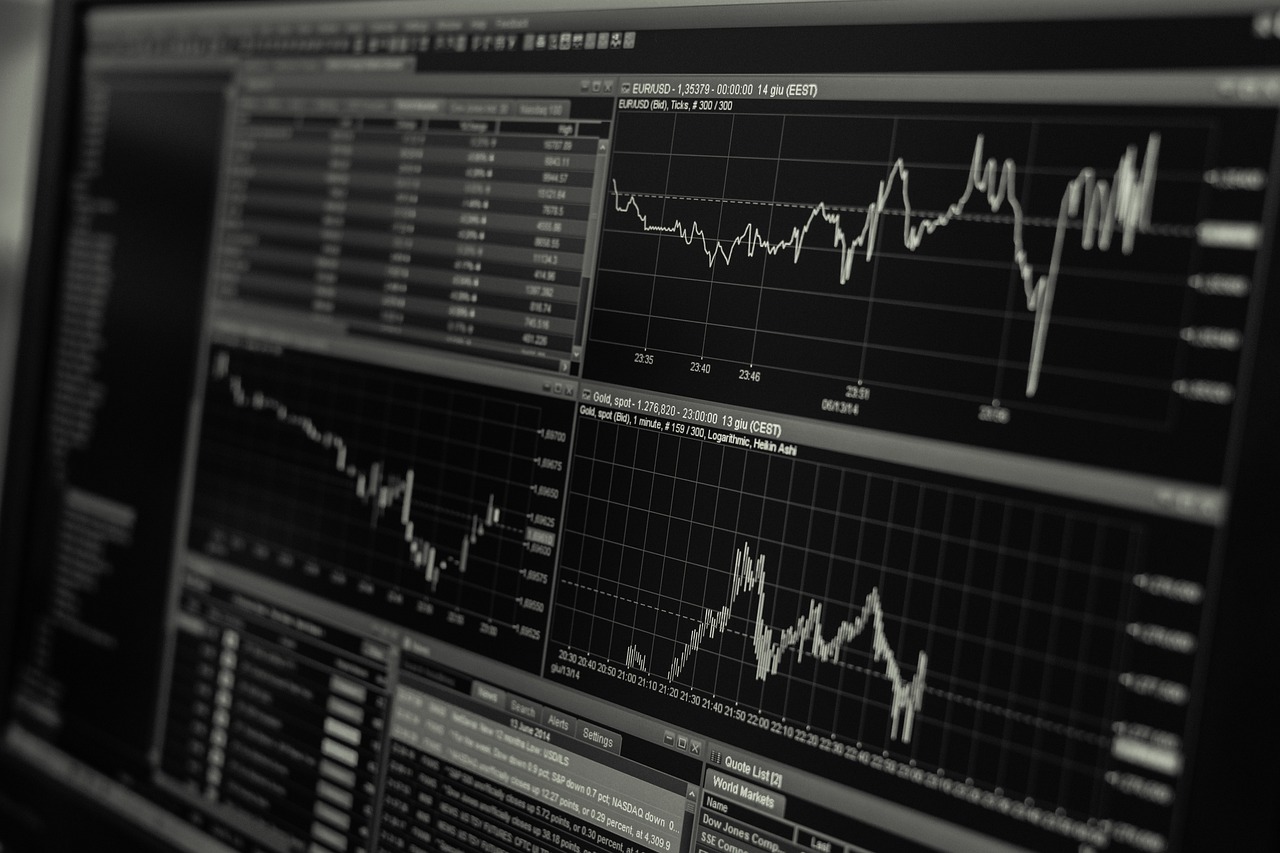
Interpreting Candlestick Signals
Understanding candlestick signals is crucial for any trader looking to navigate the volatile waters of cryptocurrency markets. Each candlestick is not just a simple representation of price; it tells a story of market sentiment, trader psychology, and potential future movements. By interpreting these signals correctly, traders can make more informed decisions and potentially increase their profitability.
To begin with, a single candlestick can provide valuable information. For instance, the body of the candlestick represents the difference between the opening and closing prices within a specific time frame. A long body indicates strong buying or selling pressure, while a short body suggests indecision among traders. When analyzing candlesticks, it’s important to consider not just their individual characteristics but also their context within the broader market trend.
Let’s delve into some common candlestick patterns and what they can signify:
- Doji: This pattern occurs when the opening and closing prices are virtually the same, indicating a stalemate between buyers and sellers. A doji can signal a potential reversal, especially if it appears after a strong trend.
- Hammer: A hammer candlestick has a small body and a long lower shadow, suggesting that buyers have stepped in after a decline. This pattern often indicates a potential bullish reversal.
- Engulfing Patterns: A bullish engulfing pattern occurs when a small bearish candle is followed by a larger bullish candle, indicating that buyers have taken control. Conversely, a bearish engulfing pattern suggests that sellers are gaining strength.
Interpreting these signals requires practice and a keen eye for detail. Traders should always look at the surrounding candlesticks to get a fuller picture. For example, if a doji appears after a strong uptrend, it could indicate that the upward momentum is weakening, and a reversal may be on the horizon. Conversely, if it appears after a downtrend, it might suggest that sellers are losing control, potentially leading to a bullish reversal.
Moreover, it’s essential to consider the volume associated with these candlestick patterns. High trading volume accompanying a bullish engulfing pattern, for instance, can reinforce the signal, suggesting a stronger likelihood of price movement in the predicted direction. On the other hand, low volume can imply that the signal may not be as reliable.
Another critical aspect of interpreting candlestick signals is understanding the time frame in which you are trading. A pattern that appears on a 1-minute chart may not hold the same significance as one on a daily chart. Therefore, aligning your analysis with your trading strategy is essential. For day traders, shorter time frames might be more relevant, while swing traders may focus on daily or weekly candlestick patterns.
In summary, interpreting candlestick signals is about more than just recognizing patterns; it involves understanding the underlying market psychology and context. By paying close attention to the characteristics of each candlestick, the patterns they form, and the volume behind them, traders can gain a significant edge in their decision-making process. Remember, practice makes perfect, and the more you analyze candlestick patterns in real-time, the better you'll become at reading the market's signals.
Q: What is a candlestick pattern?
A: A candlestick pattern is a formation created by one or more candlesticks that indicates potential price movements in the market. Traders analyze these patterns to make informed decisions.
Q: How can I learn to read candlestick patterns effectively?
A: Practice is key. Start by observing candlestick charts, noting different patterns and their outcomes. There are also many online resources and courses available that can help you master candlestick analysis.
Q: Are candlestick patterns reliable?
A: While candlestick patterns can provide valuable insights, they are not foolproof. It's essential to use them in conjunction with other analysis methods, such as support and resistance levels, and market sentiment.
Frequently Asked Questions
-
What is price action in crypto trading?
Price action in crypto trading refers to the analysis of a cryptocurrency's price movement over time. Traders use this information to make informed decisions about buying and selling, focusing on the actual price changes rather than relying on indicators or external factors.
-
Why is understanding price action important?
Understanding price action is crucial because it helps traders identify trends, reversals, and potential entry and exit points. By analyzing price movements, traders can gauge market sentiment and make better trading decisions based on real-time data.
-
What are support and resistance levels?
Support levels are price points where buying interest is strong enough to prevent the price from falling further, while resistance levels are where selling pressure may halt an upward trend. Identifying these levels is essential for traders to determine when to enter or exit trades.
-
How can I identify support and resistance levels?
You can identify support and resistance levels by looking at historical price charts and observing where the price has previously reversed or consolidated. Tools like trend lines, moving averages, and Fibonacci retracement levels can also assist in pinpointing these critical points.
-
What role does market sentiment play in price action?
Market sentiment plays a significant role in price action as it reflects the collective emotions and psychology of traders. Understanding market sentiment can help traders anticipate price movements and make more informed decisions based on how others are likely to react.
-
What are candlestick patterns?
Candlestick patterns are graphical representations of price movements within a specific time frame. They provide insights into market behavior and can signal potential reversals or continuations in the trend, making them essential tools for price action traders.
-
Which candlestick patterns should I be aware of?
Some popular candlestick patterns include doji, hammer, engulfing patterns, and shooting stars. Each of these patterns has specific implications for market direction and can help traders make decisions based on the likelihood of future price movements.
-
How do I interpret candlestick signals?
Interpreting candlestick signals involves analyzing the shape and position of the candlesticks in relation to previous price action. For example, a bullish engulfing pattern may indicate a potential upward reversal, while a bearish shooting star might suggest a forthcoming downtrend.


